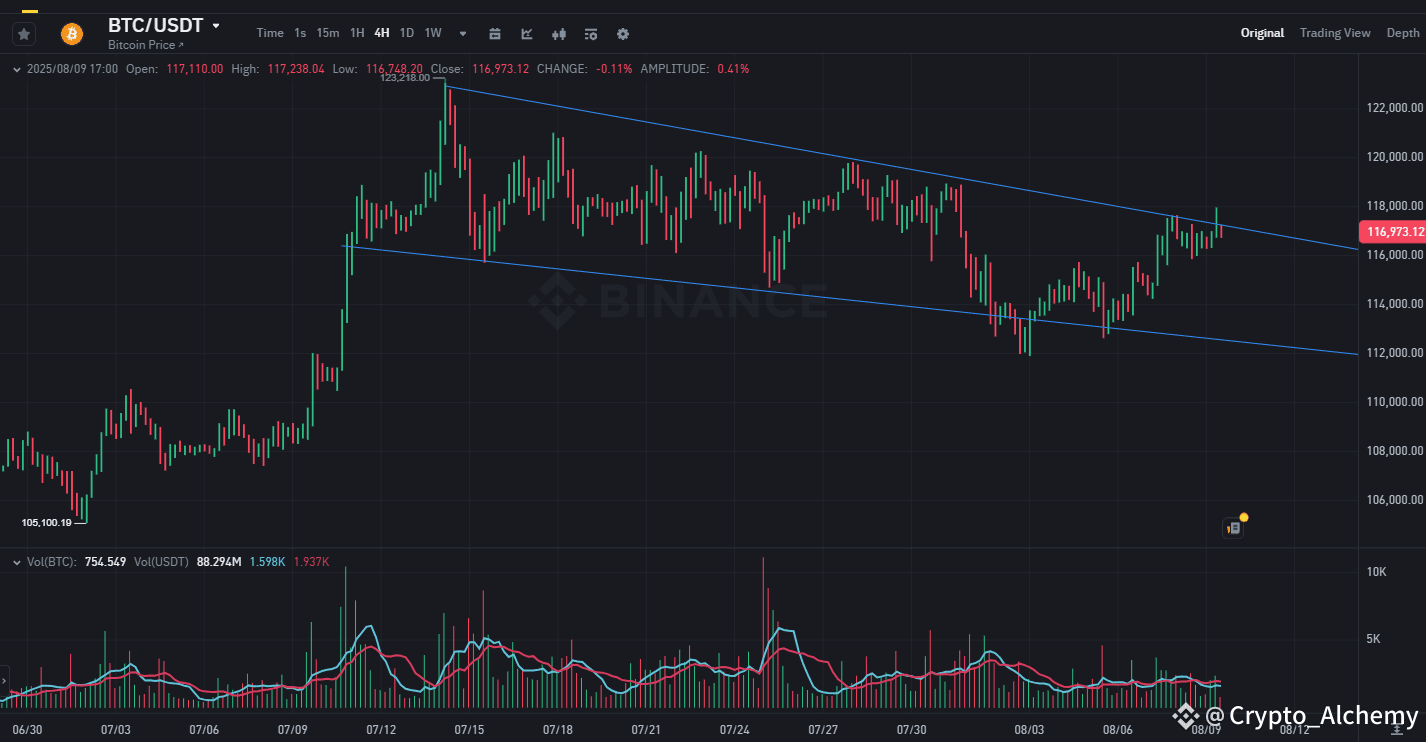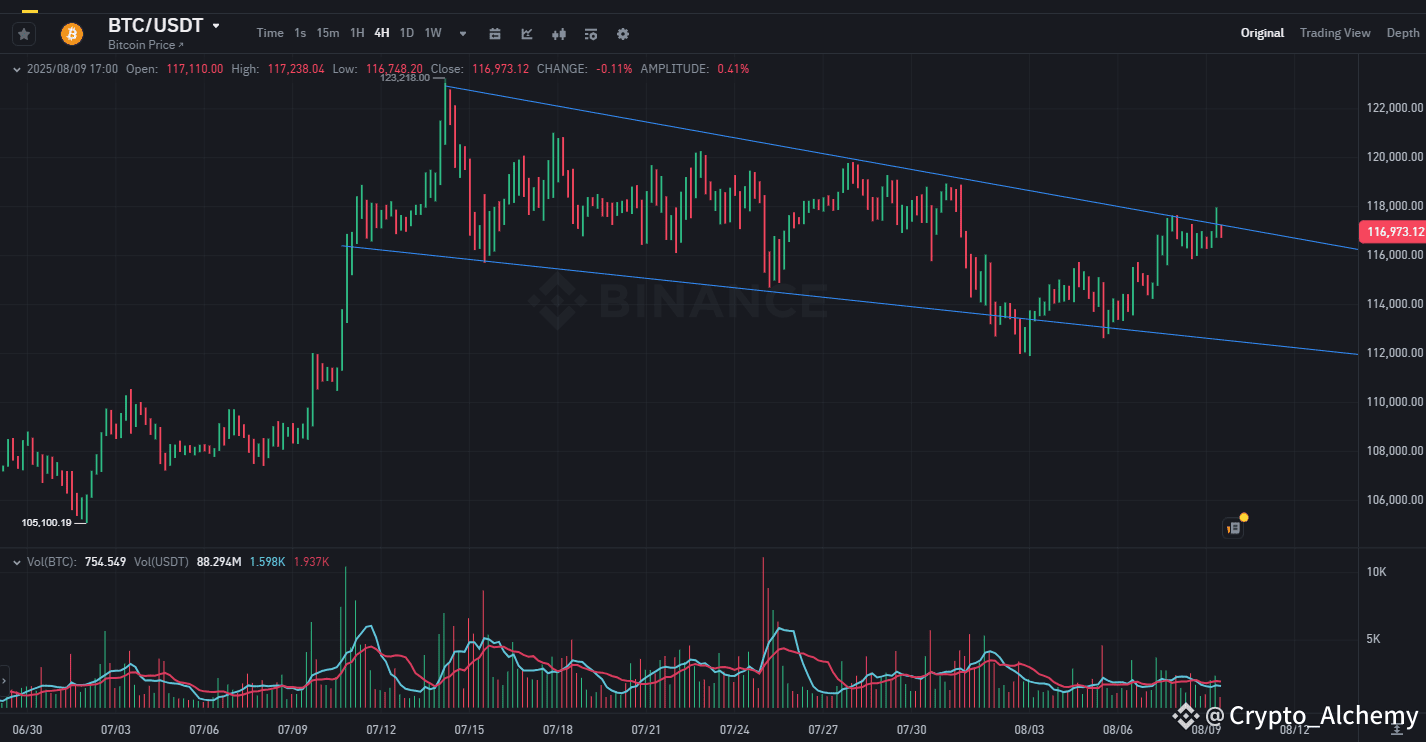
Alright, let's dive into the fascinating world of Bitcoin and what's been happening over the past 24 hours. It's been quite a dynamic period, with shifts in price, market sentiment, and even Bitcoin's dominance over other cryptocurrencies
Now, let's consider what some of the experts are saying about these price movements. A recent YouTube analysis, which focused heavily on technical indicators and on-chain data, suggests a strong bullish outlook for Bitcoin [4]. The analysis highlights that Bitcoin has successfully reclaimed a crucial horizontal range after bouncing off a key Golden Fibonacci retracement level. This is a significant technical development, as it often signals a potential continuation of an upward trend. The primary support level, according to this analysis, is positioned around $115,000. This is a critical psychological and technical barrier; if Bitcoin holds above this level, the bullish sentiment is likely to persist. Conversely, a break below $115,000 could signal a shift in momentum.
The next major price target and resistance area identified in this analysis is between $119,000 and $120,000 . This zone is particularly important because it represents a confluence of several powerful technical factors. We're talking about a Golden Fibonacci pocket, a high-timeframe weekly resistance, the Value Area High (VAH), and a major liquidity cluster where many short-sellers have placed their stop-losses. Overcoming this resistance would be a significant achievement for Bitcoin and could pave the way for further gains.
However, the analysis also points out some short-term bearish signals, such as bearish absorption on the CVD indicator and a double-top pattern on the stochastic oscillator. These could lead to a temporary retest of that $115,000 support before Bitcoin makes a more decisive move higher. The overall strategy suggested by this technical deep dive is to maintain long positions, anticipating higher prices unless that crucial $115,000 support level is breached. It's interesting to note that this particular analysis focuses solely on chart patterns and on-chain data, without incorporating broader crypto news, which gives it a very technical perspective.
Moving beyond just the price, let's talk about Bitcoin's dominance in the broader cryptocurrency market. This is a really important metric because it tells us how much of the total crypto market capitalization Bitcoin commands. According to Ainvest, Bitcoin's market dominance has seen a notable decline, falling to 57.8% as of August 8, 2025 . This is a significant drop from 61.3% just a week prior, indicating a shift in investor focus towards altcoins. This decline in dominance is often seen as a precursor to an
altcoin season, where other cryptocurrencies experience significant gains. Indeed, we're seeing altcoins like XRP and Dogecoin gaining considerable momentum. XRP has seen a 7.5% increase, and Dogecoin is up by 6.2% . These movements suggest that investors are increasingly looking for projects with real-world utility and scalability, moving beyond purely speculative plays. This shift is partly driven by growing institutional buying and evolving regulatory landscapes in places like the U.S., which are making certain altcoin projects more attractive .
It's fascinating to see how Bitcoin, despite this dip in dominance, is still showing remarkable resilience. The Ainvest report highlighted that on August 7, 2025, Bitcoin's price actually increased by 0.83% over the previous 24 hours, reaching $115,024.60 [3]. This recovery trend is further evidenced by its rise above $118,900 on August 2, 2025, after a brief pullback. This stability in Bitcoin's price, even as its dominance wanes, can be attributed to the continuous influx of institutional capital. For instance, Ethereum-based spot ETFs saw a net inflow of $222 million on August 7, 2025 .
This indicates that major players like investment firms and institutions are increasingly comfortable with and investing in the crypto space, reinforcing the trend of mainstream adoption. The confidence in Bitcoin as a long-term store of value is also evident in the behavior of long-term holders. Data from July 22, 2025, shows that the number of wallets holding less than 100 BTC has surpassed new supply levels, suggesting sustained demand across a diverse investor base . This isn't just about big institutions; it's also about a wider audience embracing Bitcoin.
Now, let's broaden our perspective a bit and consider the geopolitical landscape. The expansion of the BRICS coalition, which includes Brazil, Russia, India, and South Africa, is adding another layer of complexity to the crypto market. These nations are exploring blockchain-based payment systems and digital currencies, which could significantly influence global adoption trends. With the total value of the global crypto market now at $3.95 trillion as of August 8, 2025, the BRICS nations have the potential to either challenge or complement Bitcoin's role in cross-border transactions .
However, it's not a straightforward path. There's still a lot of uncertainty regarding a unified digital currency framework among BRICS members. Russia has been quite proactive in integrating blockchain into its financial infrastructure, but India, for example, is still navigating a very uncertain regulatory environment. And of course, China's influence within the bloc adds another layer of geopolitical complexity, making a cohesive digital currency initiative a bit of a challenge .
Despite these hurdles, the broader adoption of blockchain technology within the BRICS bloc could still be a net positive for the crypto industry, increasing mainstream awareness and legitimacy. Some analysts are concerned that a centralized BRICS digital currency might compete with Bitcoin, but the widespread use of blockchain itself could ultimately benefit the entire ecosystem .
Institutional interest isn't just limited to ETFs. The launch of an institutional blockchain fund by Plasma and Aave on August 7, 2025, further highlights the maturing nature of the crypto market. This move blurs the lines between traditional institutional investment strategies and the crypto space, suggesting that more conventional financial players are entering the market and integrating with existing financial systems
This interplay between institutional adoption and shifting market dynamics is truly shaping Bitcoin's future. While its dominance has seen a recent dip, its price resilience and the growing interest from institutional investors suggest a strong underlying foundation. The coming months will be crucial in determining how Bitcoin maintains its relevance in this rapidly evolving market, especially with utility-driven altcoins and geopolitical shifts playing increasingly significant roles .
In summary, the last 24 hours have shown us a Bitcoin that is holding its ground in terms of price, even as its market dominance experiences a slight decline. This decline is largely due to the rising interest and performance of altcoins, particularly those with strong utility.
The institutional money continues to flow into the crypto space, providing a solid foundation for the market. The geopolitical landscape, especially with the BRICS nations exploring blockchain, adds another layer of intrigue and potential for future growth. It's a dynamic and exciting time in the crypto world, with Bitcoin at the center of it all, adapting and evolving amidst these significant shifts.




